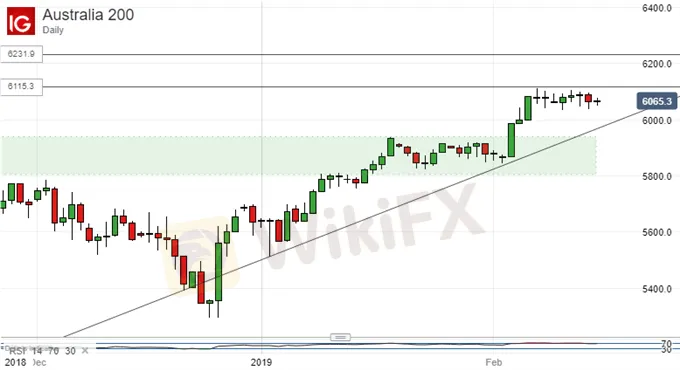Most Asian Stocks Weaker On US Retail Shock, Trade Talks In Focus
Abstract:Asia Pacific stock markets struggled with worries about both the US and Chinese economies as trade negotiations between the two continued in Beijing.
Asian Stocks Talking Points:
Markets were broadly weaker thanks to Wall St.s data-inspired swoo
Chinese inflation missed expectations, hitting the Australian Dollar
Crude oil prices hit their 2019 peaks as investors mulled supply cut
Find out what retail foreign exchange investors make of your favorite currencys chances right now at the DailyFX Sentiment Page
Asian stocks were always likely to struggle Friday given that they had to follow Wall Streets gloomy Thursday which came in turn on the back off very weak US retail sales.
They fell by 1.2% on the month in December, the biggest monthly collapse since September 2009, sending Stateside equity lower. There was some patchy regional news too in the form of Chinese inflation which missed expectations at both the consumer and factory-gate levels. There may have been some holiday distortion in these figures but, taken with other recent softer numbers, they seem to have been taken by investors as more bad news out of China.
Markets are still of course watching for any trade headlines from the US/China meeting currently taking place in Beijing, but risk appetite took a knock even so.
The Nikkei 225 was down 1.3% as its Friday close loomed, with Shanghai off by 0.6% and the Hang Seng down 1.6%. Sydneys ASX 200 was an outlier, rising 0.3% as higher oil prices gave the energy sector a lift.
Crude oil prices hit their highs for the year thanks to supply cuts from OPEC.
The ASX remains well-within its established uptrend, and above its former trading range.

However, it remains well short of its most pressing resistance level, which is proving a tough nut for bulls to crack. If they fail to do so soon then the index could be in danger of topping out.
The US Dollar edged lower against the Japanese Yen, but made gains against its Australian cousin which wilted initially after those Chinese inflation figures. Gold prices, meanwhile, got their customary risk-aversion lift.
The day‘s remaining economic data highlight will probably be the University of Michigan’s venerable US consumer sentiment snapshot, but its not alone on the docket. News of US industrial production is coming up too, along with import and export price figures for January. Before all that, investors will get a look at official UK retail sales number
Read more

Global Economic Tensions: US Resilience, European Struggles, and China’s Investment Decline
July's strong US retail sales and declining jobless claims highlight the resilience of the US economy despite easing inflation pressures. Meanwhile, the UK saw a surprising drop in unemployment but slower wage growth, and the Eurozone experienced its sixth consecutive quarter of productivity decline. China's sharp drop in foreign direct investment reflects growing concerns over its economic outlook. Globally, economic dynamics are complex, with the US remaining strong

Global Market Shifts Amid Economic Indicators, Corporate Updates, and Geopolitical Tensions
The global market experienced significant fluctuations driven by a mix of economic indicators, corporate updates, and geopolitical tensions. China's CPI rise indicates a recovery in domestic demand, while U.S. markets rebounded on strong employment data. Meanwhile, geopolitical tensions escalated with Ukraine's largest offensive in Russia’s Kursk region, and Middle Eastern ceasefire talks gained momentum. Key tech companies like Apple and Alibaba are set to release crucial earnings reports.

Stocks Mixed As RBA Leaves Rates Alone, Australian Data Mixed Too
Equities were mostly lower, if not by very much. Australian interest rates remained at record lows. That was as expected, but retail sales disappointed as the current account surged ahead

Stocks Slip As US Yield Curve Continues To Stoke Recession Fears
Asia Pacific equity markets failed to capitalize on Wednesdays Wall Street gains as US yield curve inversion and Brexit worries continued to dominate.
WikiFX Broker
Latest News
Behind the Licences: Is Pepperstone Really Safe for Malaysians?
Promised Recession... So Where Is It?
Hirose Halts UK Retail Trading Amid Market Shift
CONSOB Blocks EurotradeCFD’s Solve Smart, 4X News
FINRA Fines United Capital Markets $25,000
Oanda: A Closer Look at Its Licenses
FCA Urges Firms To Report Online Financial Crime
IBKR Jumps on September DARTs, Equity Growth
Service Sector Surveys Show Slowdown In September Despite Rebound In Employment
Rate Calc

